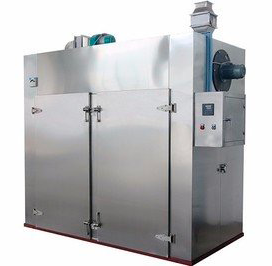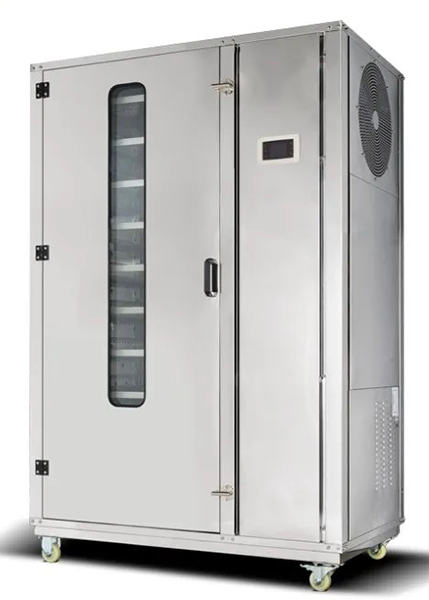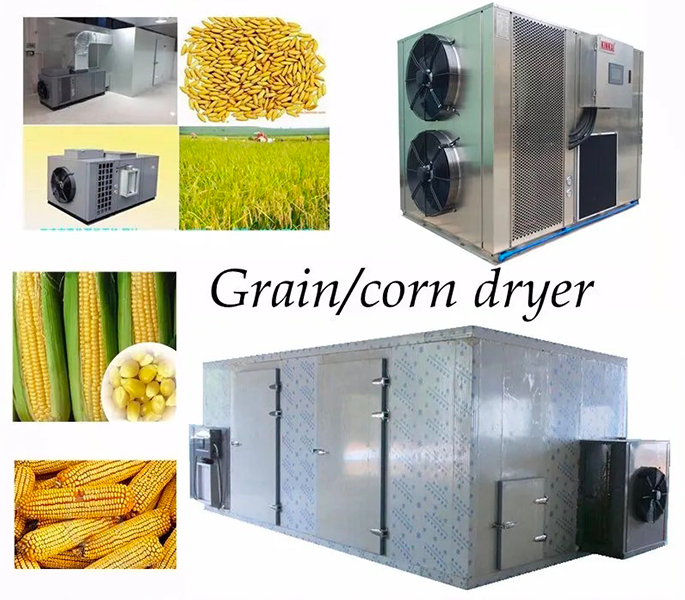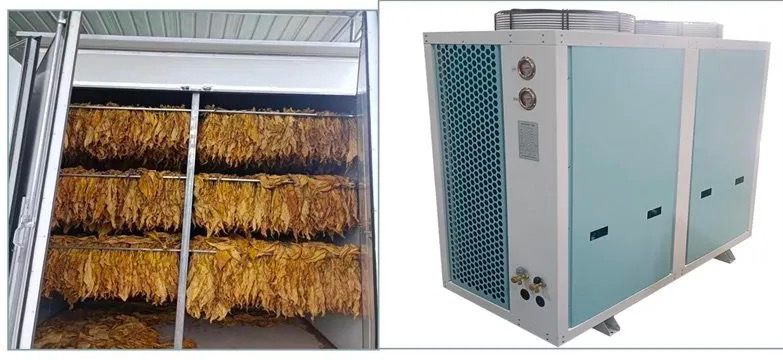
Content Menu
● Understanding Food Dehydration
● Types of Food Dehydrators
>> Heat Pump Dryers
>> Condenser Dryers
● Key Differences Between Heat Pump and Condenser Dryers
● Choosing the Right Dryer for Your Needs
● Best Practices for Food Dehydration
● Popular Foods for Dehydration
● The Science Behind Dehydration
● Maintenance Tips for Your Dehydrator
● Conclusion
● FAQ
>> 1. What is the main advantage of using a heat pump dryer?
>> 2. Can I use a condenser dryer for all types of food?
>> 3. How long does it typically take to dehydrate food?
>> 4. Is it safe to dehydrate meat in these dryers?
>> 5. What foods should I avoid dehydrating?
Food dehydration is a method of preserving food by removing moisture, which inhibits the growth of bacteria, yeast, and molds. This age-old technique has evolved with technology, leading to the development of various food dehydrators, including heat pump and condenser dryers. In this article, we will explore the differences between these two types of dryers, their advantages, and how to choose the best one for your food dehydration needs.

Understanding Food Dehydration
Dehydrating food involves reducing its water content to extend shelf life while preserving its nutritional value. The process can be done using different methods:
- Electric Dehydrators: These appliances use low heat and airflow to dry food evenly.
- Oven Drying: Using an oven can be effective but requires careful temperature control.
- Sun Drying: A traditional method that depends on climate conditions.
Each method has its pros and cons, but electric dehydrators are often preferred for their efficiency and ease of use.
Types of Food Dehydrators
When it comes to electric dehydrators, there are two primary types: heat pump dryers and condenser dryers. Understanding their mechanisms and benefits is crucial for making an informed choice.
Heat Pump Dryers
Heat pump dryers are energy-efficient appliances that use a refrigeration cycle to remove moisture from food. They operate at lower temperatures compared to traditional dryers, which helps in retaining the nutritional quality of the food.
- Advantages:
- Energy Efficiency: They consume less energy due to their recycling of hot air.
- Gentle Drying: Lower temperatures help preserve vitamins and enzymes in food.
- Versatility: Suitable for a wide range of foods, including fruits, vegetables, and meats.
- Environmentally Friendly: Reduced energy consumption contributes to a smaller carbon footprint.
Condenser Dryers
Condenser dryers work by heating air to high temperatures and circulating it through the food. The moisture is then collected in a condensation tray.
- Advantages:
- Faster Drying Times: High temperatures lead to quicker moisture removal.
- Lower Initial Cost: Generally more affordable than heat pump models.
- Ease of Use: Simple operation with straightforward settings.
- Compact Design: Often smaller and easier to fit in various kitchen spaces.

Key Differences Between Heat Pump and Condenser Dryers
| Feature | Heat Pump Dryer | Condenser Dryer |
| Energy Efficiency | High | Moderate |
| Drying Temperature | Low (gentle drying) | High (fast drying) |
| Cost | Higher initial investment | More affordable |
| Nutritional Retention | Excellent | Good |
| Versatility | Very versatile | Suitable for most foods |
Choosing the Right Dryer for Your Needs
When deciding between a heat pump and a condenser dryer for food dehydration, consider the following factors:
- Volume of Food: If you plan to dehydrate large quantities regularly, a heat pump dryer may be more beneficial due to its efficiency.
- Nutritional Goals: For those focused on retaining maximum nutrients, heat pump dryers are preferable.
- Budget Considerations: If upfront costs are a concern, condenser dryers offer a more economical choice without sacrificing too much performance.
- Space Availability: Both types are compact, but ensure you have enough space for proper airflow around the unit.
Best Practices for Food Dehydration
To maximize the performance of your dehydrator, follow these tips:
- Prepare Food Properly: Slice fruits and vegetables uniformly to ensure even drying. Thinner slices will dehydrate faster.
- Avoid Overloading Trays: Spread food in a single layer without overcrowding to allow proper airflow.
- Rotate Trays: If using a dehydrator with multiple trays, rotate them periodically for uniform drying.
- Monitor Temperature Settings: Different foods require specific temperatures; adhere to guidelines for optimal results.
- Use Quality Ingredients: Freshness matters! Always start with high-quality fruits or vegetables for the best results.
Popular Foods for Dehydration
Certain foods lend themselves particularly well to dehydration. Here are some popular options:
- Fruits: Apples, bananas, strawberries, and mangoes are favorites due to their natural sweetness.
- Vegetables: Carrots, bell peppers, tomatoes, and zucchini can be dried for snacks or cooking.
- Herbs: Basil, oregano, thyme, and parsley retain their flavor when dehydrated.
- Meats: Jerky made from beef or turkey is a popular dehydrated snack that is high in protein.
- Nuts and Seeds: While not typically dehydrated in the same way as fruits or vegetables, lightly roasting nuts can enhance their flavor before storage.
The Science Behind Dehydration
Understanding the science behind dehydration can help you appreciate its benefits further. The primary goal is to remove moisture while maintaining flavor and nutrients.
1. Moisture Removal: When food is heated in a dehydrator, moisture evaporates from its surface. As air circulates around the food, it carries away this moisture.
2. Temperature Control: Maintaining lower temperatures is crucial in heat pump dryers as it prevents cooking the food while still allowing moisture removal. This gentle approach helps preserve delicate flavors and nutrients that would otherwise be lost at higher temperatures.
3. Airflow Dynamics: Proper airflow ensures that moisture is evenly removed from all surfaces of the food. Many modern dehydrators come equipped with fans that help circulate air efficiently.
Maintenance Tips for Your Dehydrator
To ensure longevity and optimal performance of your dehydrator:
- Clean Regularly: After each use, clean trays and surfaces with warm soapy water to prevent residue buildup.
- Check Seals and Gaskets: Ensure all seals are intact; damaged seals can lead to inefficient drying.
- Store Properly: When not in use, store your dehydrator in a cool, dry place away from direct sunlight.
Conclusion
Choosing between a heat pump or condenser dryer ultimately depends on your specific needs regarding energy efficiency, budget, and nutritional goals. Both types have unique advantages that cater to different preferences. By understanding these differences and following best practices for food dehydration, you can enjoy delicious preserved foods year-round while maximizing flavor retention and nutritional value.

FAQ
1. What is the main advantage of using a heat pump dryer?
Heat pump dryers are highly energy-efficient and operate at lower temperatures, which helps retain more nutrients in the food being dehydrated.
2. Can I use a condenser dryer for all types of food?
Yes, condenser dryers can effectively dehydrate most foods; however, they may not preserve nutrients as well as heat pump dryers due to higher operating temperatures.
3. How long does it typically take to dehydrate food?
Dehydration times vary based on the type of food and thickness of slices but generally range from several hours to over 12 hours.
4. Is it safe to dehydrate meat in these dryers?
Yes, both heat pump and condenser dryers can safely dehydrate meat when done at appropriate temperatures (typically around 160°F).
5. What foods should I avoid dehydrating?
High-fat foods like avocados or olives should be avoided as they do not dehydrate well and can go rancid quickly.












